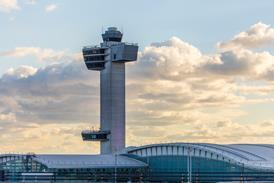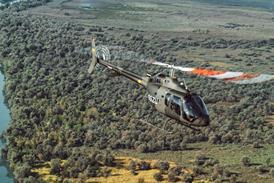After a pandemic that knocked the stuffing out of the global aviation industry, the world is taking to the skies again. Although the virus is still prevalent, nations are tentatively opening their borders and international flights are once more connecting families and businesses.

It is largely thanks to an impressive vaccination roll-out that, in most major aviation markets, has diminished COVID-19’s deadly grip, and given governments and the traveling public faith that flying is not as much of the health risk many once feared.
However, vaccines – and other measures such as onboard mask mandates, hygiene measures, and sanitizing surfaces – are only part of the answer. While vaccination has proved successful at suppressing symptoms or stopping serious disease, it does not provide a 100% firewall against the virus.
“Even with vaccinations in place, individuals can still become infected,” explains Brian Plew, Director of Business Development at Thermo Fisher Scientific. “Vaccinations protect the individual from severe reaction to an infection. It does not imply protection for the public as a whole.”
For airlines, and those responsible for public health generally, so-called silent transmission of the virus by asymptomatic carriers may be a big threat. It only needs one or two positive cases in a crowded terminal or airliner cabin to spark a super-spreader event.
This is where testing comes in. Along with a loosening of travel restrictions, governments across the world have introduced mandatory testing for passengers, largely involving a requirement for a negative PCR – or polymerase chain reaction – test result before departure, and often on arrival too.
PCR tests are the gold standard technology of COVID-19 testing. Because they can detect small amounts of the virus, they can pick up on positive cases before individuals make journeys to the airport. They are also scalable in that thousands of samples can be processed daily in a single lab.
The alternative rapid antigen tests – which look for specific viral antigen proteins on the virus surface – live up to their name by delivering a result in 30 minutes. They can also be cheaper and more convenient than PCR tests, mainly because passengers can carry them out at home using kits.
However, they are less sensitive than PCR tests*. They are most effective on individuals with COVID-19 symptoms, as they will tend to have higher viral load levels that are easier to detect.
Many airlines have, until now, been content to at least partly put the onus on the passenger. After all, with almost every country – and sometimes territories within countries – having their own regulations and test regimes, it is difficult to offer a one-size-fits-all solution.
However, Thermo Fisher is urging airlines to take the initiative by providing their passengers with a “bundled” product that allows them to organize a convenient PCR test and log their result in a way that is acceptable to the authorities at the destination airport.
Thermo Fisher Scientific can connect carriers and other travel organizations with a network of test centers, laboratories, and digital health passport providers that can take care of all the passenger’s pre-travel testing requirements in a user-friendly and streamlined way.
Not only does this represent great customer service and can help make passengers less nervous about travelling, but it also helps airlines avoid the scenario of a COVID-19 outbreak that can be linked to a flight, something that could create serious operational, not to mention brand reputation, challenges.
And as for the temptation to opt for quicker and cheaper rapid antigen tests? Well, it is a question of accuracy verses speed. Rapid antigen tests do have the advantage of providing relatively rapid results, and tend to be less expensive to the consumer. However, the price of PCR testing is coming down all the time – and turnaround times can be as quick as 30 minutes.
Along with vaccines and other sanitary precautions, PCR testing is a key tool to making flying safe and restoring the confidence of the flying public that airlines and the wider aviation industry must embrace.
*Centers for Disease Control and Prevention. Interim guidance for antigen testing for SARS-CoV-2.
https://www.cdc.gov/coronavirus/2019-ncov/lab/resources/antigen-tests-guidelines.html
For more guidance on starting a testing program, download our testing guide























